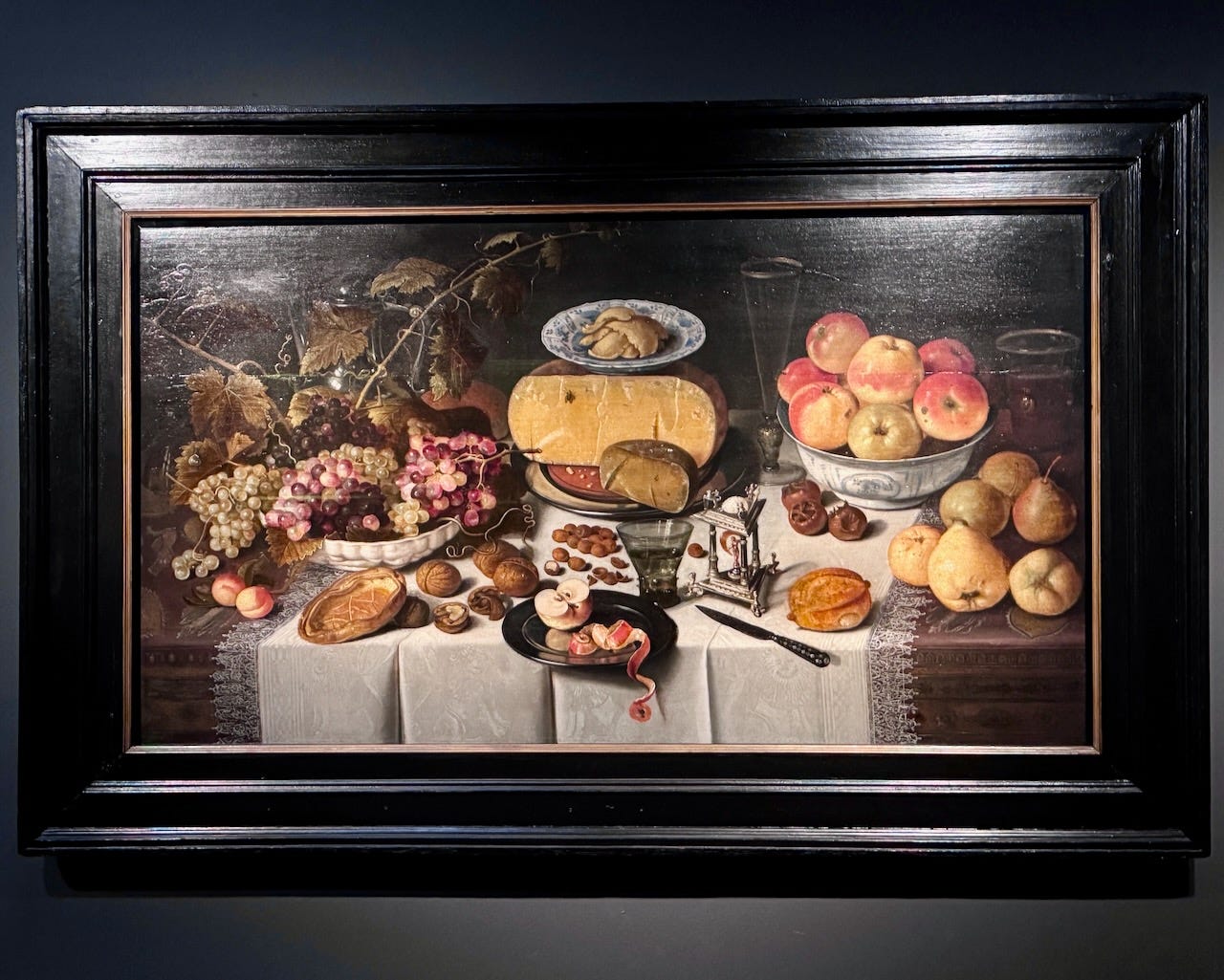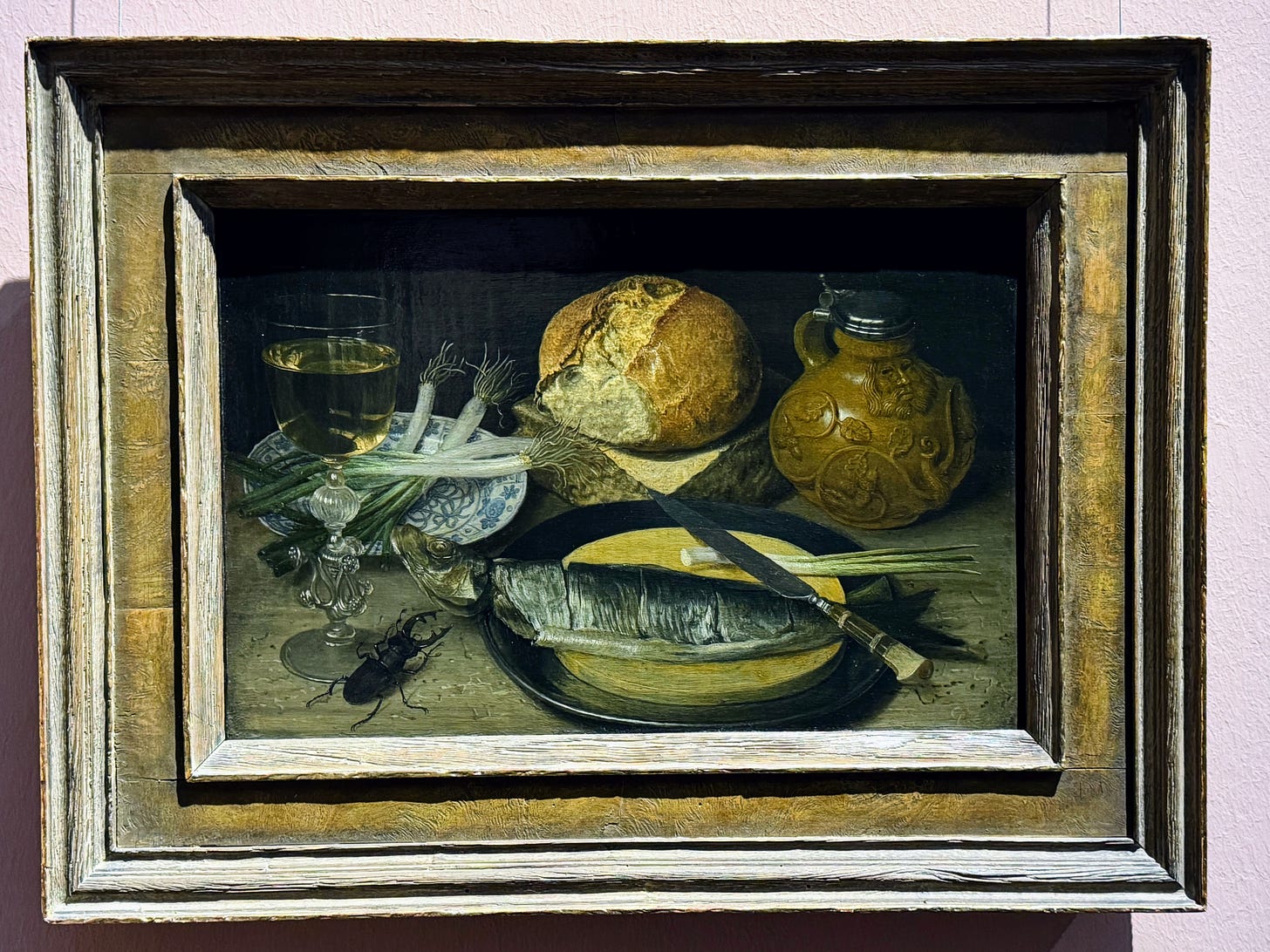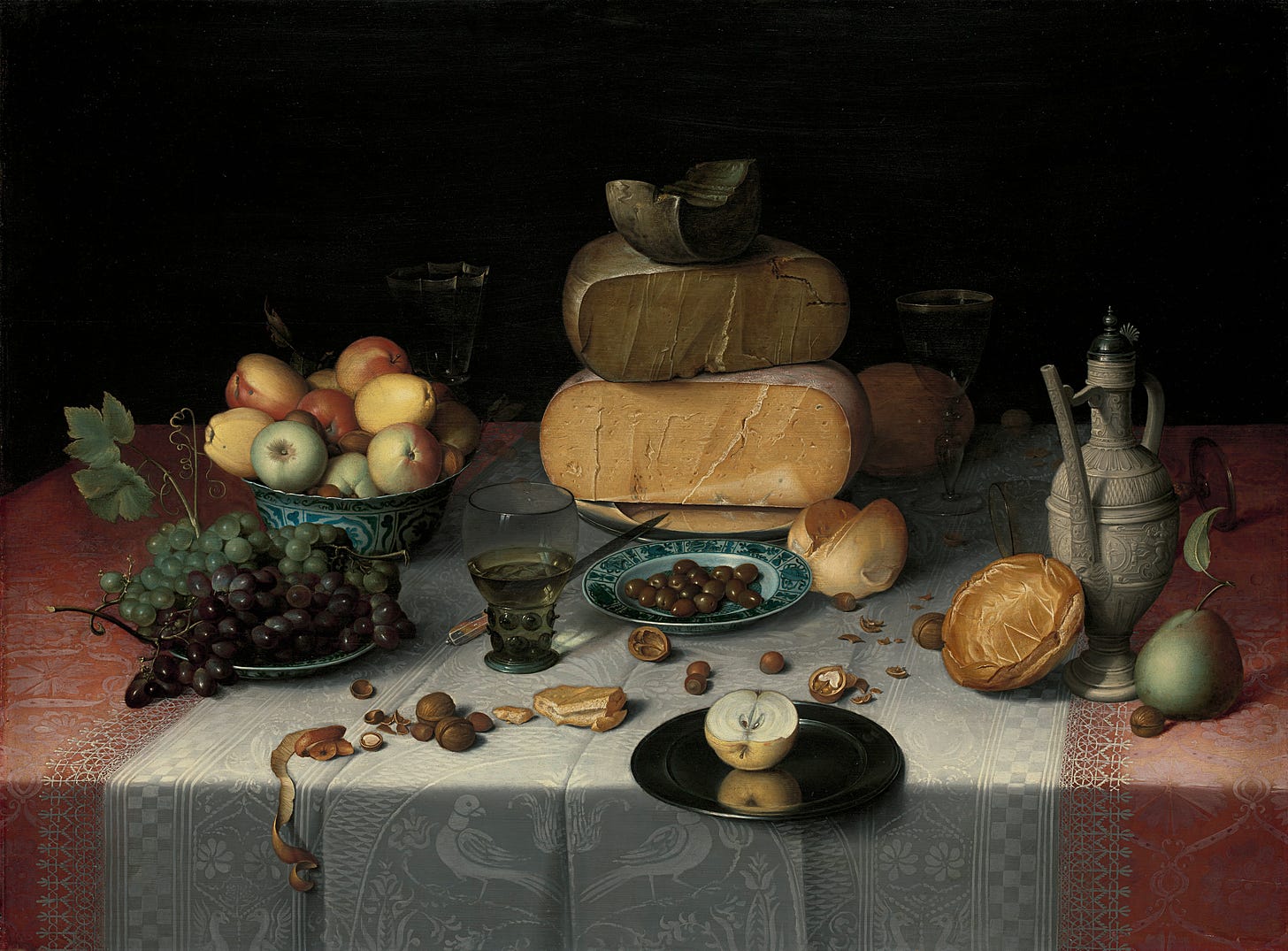(1) What seems to you like an everyday, boring experience may be totally foreign and inaccessible to other people. It can be delightful and helpful for them to see it, even if you’ve seen it for nine years everyday. This is one of Noah’s stated principles.
(2) I like Dutch Golden Age still life paintings. Big wedges of cheese, glassy eyed herring and equally glassy grapes, glowing wine glasses, walnuts, and Instagram-purposefully draped tablecloths. These are everyday things converted to beautiful tableaus. It’s trite to say that they make you enjoy the beauty of a wedge of cheese - you know, really see the cheese - but that’s what they do. In this case “beauty” is something more akin to what the mindfulness people are seeking: “being present,” therapeutically realizing that everything is OK, and that your job is to stop being a bundle of worries and just be a wedge of cheese. The cheese wedge was always beautiful, you were just too worried about your email. (When I look at abstract art, more of what I see is a box of parts, sometimes just a littered street the morning after a festival. You see the parts, or you can focus in on just one part: those single color canvases, those jumble of lines or huge installations of wires and objects. Sometimes a color - like Klein blue - or a perfect arrangement of lines - Mondrian, etc. - can be A Thing [to me] but the rest is like walking around in a hardware store. I get more from seeing the cheese wedge than all the parts that went into making it.)

(3) Noah’s videos have one of the highest ratios of likes to views that I encounter. He has a very small audience, but that audience is engaged. When you look at the time people actually watch a video, with most videos, people drop after fifteen, even five seconds. “As with almost every video on You[T]ube, the first minute has the most loss (go look). This is why we freak out so much about the first minute and go so above and beyond to make it the best we freakin[’] can,” says the Mr Beast manual. But, when it comes to Noah’s videos, I bet if you look at his charts, his viewers watch a lot more than the first 15 seconds. See #1 above.
(4) When you watch this video, hopefully what you see is, sure, how “an artist engages with their work.” But what you can also see is a model for engaging with your surroundings, both physically and metaphorically - existentially? I’m never sure what that last word means except something like “personal vibes.” The word “metaphysically” in everyday speech is even more abstract. It’s a filler word for “something important I can’t put words around.” What you see in the video is that, and if it “speaks” to you, it makes you wonder around muttering to yourself too. And, if not: maybe I suggest wedges of cheese?

(5) Also, it’s just a guy walking around taking photos. Clearly, everyone likes taking photos, as the smart phone and social media era shows. Capturing a scene, a moment, a curiosity, whatever is fun and even part of living. It can be crude paintings on cave walls, an oral story telling culture, carvings and statues, writing on clay tablets and paper, music, paintings, photography, video, even multi-tools. Whatever it is, capturing a moment is like breathing and eating.
(6) And to that end, you bet, there’s some commentary about “these kids today and their obsession with video.” But what that commentary can say to you is more like: yeah, we can all be more present, engaged, and living life now. We don’t all need a $5,000 camera and the luxury to spend all your time find beauty. You don’t have to have the skills of painting a perfect cheese wedge, nor the wealth to buy it and hang it up in your parlor. You can just take out your phone and make your own cheese wedge picture. Now we can all get that, and make it. Even if it’s 30 seconds videos of people dancing or commenting on absurd fast food menu items.

(Related: you can do this kind of thing when you ponder the relationship between a culture and its everyday tools.)
Logoff
See y’all next episode!